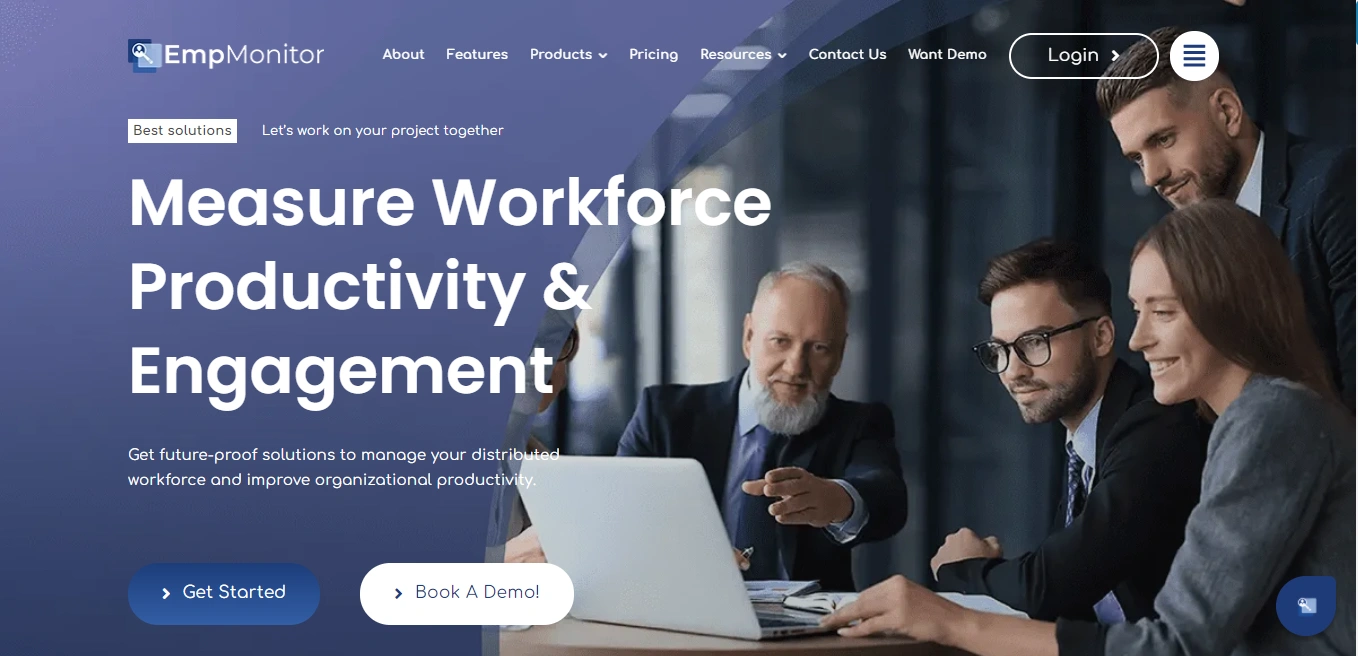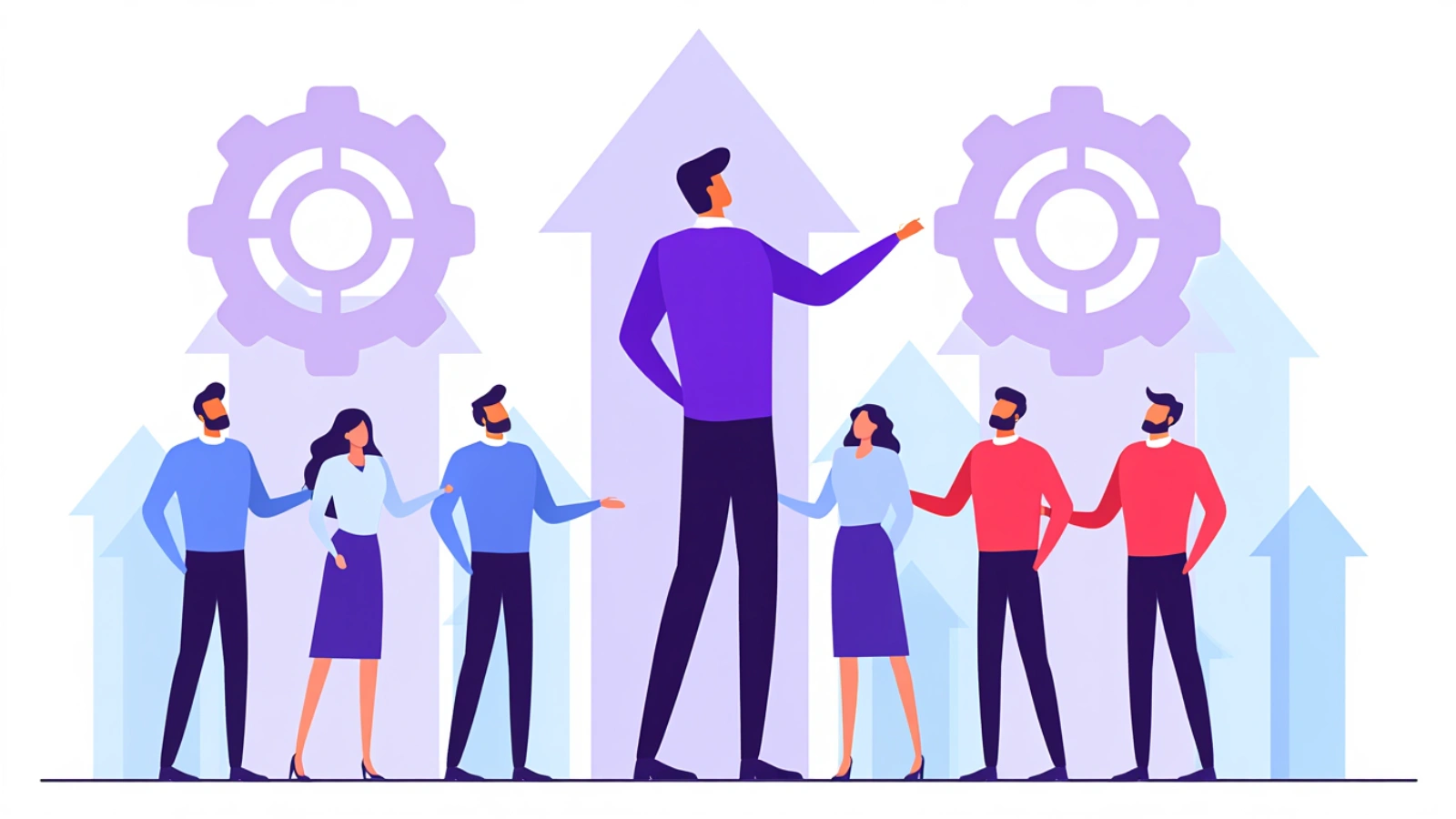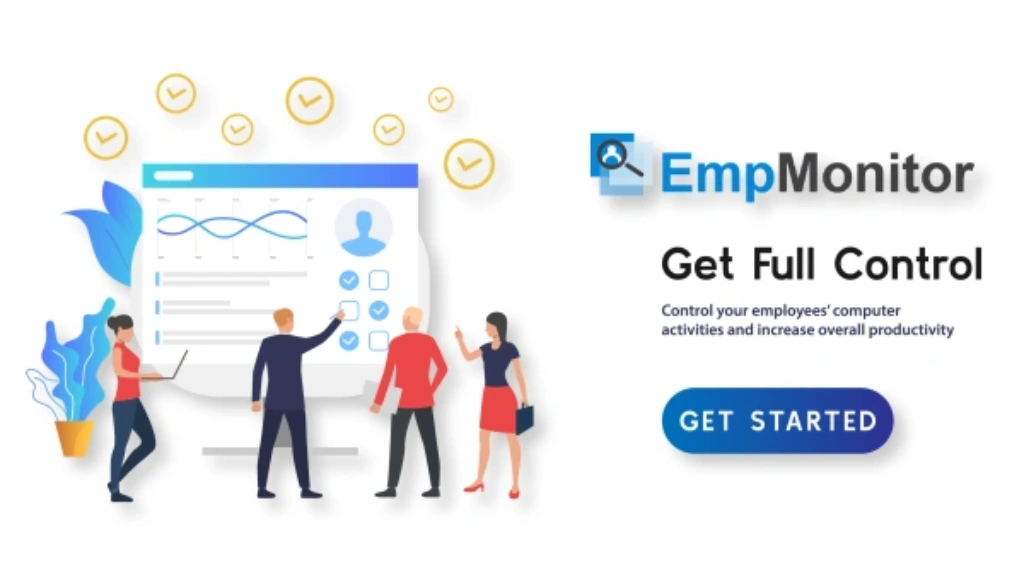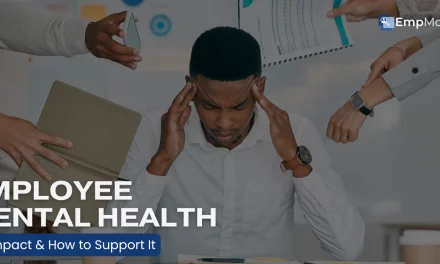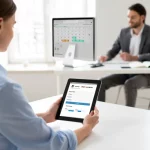Forget the old way of thinking about employee strength, where performance reviews felt like a search for what went wrong.
We are talking about something far more useful and, really, more inspiring:
Building a workplace where everyone succeeds because they are doing what they naturally excel at.
It’s not just about making people feel good; it’s a smart move for your business.
When you tap into what truly energizes your team members and puts a gleam in their eyes, you will see an effect of engagement, people sticking around longer, and your whole operation just… working better.
This is not just another management trend.
We are going to dive into how to genuinely figure out what makes each person on your team move past simply “knowing” their strong points and put those abilities to work.
In a hurry? Listen to the blog instead!
What Exactly Are We Talking About When We Say “Employee Strengths”?
Before we dive into the key strengths of an employee strengths, let’s clarify what they are.
We are not talking about someone being “good at Excel” or “a great public speaker,” those are skills. And yes, skills are important, but employee strengths examples go deeper.
Think of them as those innate talents, the things that truly set someone up, the tasks they tackle with a natural and even enjoyment.
It is that unique combination of what someone is naturally good at, what they have learned to do exceptionally well, and those consistent, positive behaviors that just seem to be part of their DNA.
So, when we talk about the employee strengths of an employee, we are looking for those unique superpowers. Here are some common categories, just to get your mind:
Communication:
This is not just talking. It is about truly listening, making complex ideas clear, or even having a knack for persuasive, engaging conversations.
Collaboration & Teamwork:
Some folks just naturally bring people together, resolve conflicts, and genuinely lift everyone around them.
Problem-Solving & Critical Thinking:
These are the people who dissect challenges, see patterns others miss, and come up with brilliant, often out-of-the-box, solutions.
Adaptability & Resilience:
Life and work throw curveballs. Strengths here mean following in change, bouncing back gracefully from setbacks, and staying calm when things get messy.
Initiative & Proactiveness:
These are your self-starters, the ones who don’t wait to be told but see what needs doing and just go for it.
Leadership & Influence:
It’s about inspiring others, setting a clear vision, and moving a group forward with natural authority.
Attention to Detail & Quality:
For some, precision is not a chore; it’s a calling. They ensure everything is thorough, accurate, and consistently excellent.
Emotional Intelligence:
Understanding their own emotions and, crucially, reading and responding to the emotions of others, leads to stronger relationships and smoother interactions.
Now, why does this matter so much?
Because when you lean into these areas, the benefits for everyone are huge. People who use their strengths daily are more engaged, happier in their roles, and frankly, just better at their jobs.
This translates directly to improved overall performance and smoother productivity management across the board. Plus, when people feel valued for their unique contributions, they stick around longer, and your team just clicks better.
Also Read!
How To Perform Employee Performance Tracking For Maximum Results In 2025?
Employee Experience: Key Benefits, Strategies, & How to Improve in 2025?
How To Identify Employee Strengths (& Those Tricky Weaknesses)
So we know what strengths are. Now comes the work: how do you pinpoint these unique superpowers in your team?
Identifying employee strengths and weaknesses effectively requires a more subtle, ongoing approach.
Here are some:
Deeper Dives For Deeper Insights
Traditional performance reviews often feel like a post-mortem, focusing heavily on what went wrong or what’s “lacking.” But truly understanding your team means flipping that script. We want to create our conversations and observations to actively uncover those employee strengths.
Formal Methods:
Yes, formal processes still play a vital role. They provide a structured way to gather information and ensure consistency.
Performance Reviews & Self-Assessments with a Twist: Instead of just asking, “What did you achieve?”, frame questions to uncover how they achieved it and what parts of the process they genuinely enjoyed.
Ask employees to reflect on projects where they felt most alive and effective. Encourage them to identify what they believe are their 5 key employee strengths of an employee; you might be surprised by their insights. What kind of tasks make them lose track of time? When do they feel most energized?
360-Degree Feedback: This is gold. Getting input from peers, direct reports, and other managers provides a well-rounded view. Someone might be modest about their employee strengths as an employee, but their colleagues will often highlight specific instances where they truly shone, perhaps in collaboration or problem-solving.
Informal & Ongoing: The Everyday Detective Work
Some of the best insights come from simply paying attention during the day-to-day. This is where you truly become a talent scout.
Listen Actively in 1:1 Meetings: Ask open-ended questions like, “What part of your current work do you find most engaging?” or “What kind of challenges do you love to tackle?” Their answers will reveal where their natural energy lies.
Observe Performance in Action: Watch how people approach different tasks.
- Who naturally steps up to mediate a conflict?
- Who effortlessly breaks down a complex problem?
- Who takes initiative without being asked?
Those spontaneous moments often highlight genuine employee strengths.
Analyze Successes (and Failures): When a project goes exceptionally well, dissect it. What unique contributions did each person bring?
Similarly, when something goes awry, look past the surface. How did individuals approach the challenge? Did someone’s particular strength help mitigate a bigger problem, even if the overall outcome wasn’t perfect?
“What If” Scenarios: Pose hypothetical challenges to your team members and listen to their instinctive reactions. Do they immediately jump to creative solutions, organize resources, or focus on potential risks? Their first instinct can reveal a core strength.
Use Technology To Spot Strengths & Boost Productivity
So, you are becoming a master at spotting those hidden talents. But what if you could have a little help from technology to make that process even smoother, especially when it comes to understanding how those employee strengths translate into real-world output?
This is where tools designed for modern workplaces come into play.
EmpMonitor is a comprehensive employee monitoring and time-tracking solution designed for businesses in remote, hybrid, and on-premise setups.
It provides a range of features to boost productivity, enforce compliance, and safeguard sensitive data.
Here’s a look at some of the key features of EmpMonitor.
Employee Productivity & Activity Monitoring
Real-time tracking of websites, apps, keystrokes, mouse activity, and periodic screenshots—offering a clear snapshot of work behavior
Automated Time & Attendance Tracking
Includes digital timesheets, manual check-in/out, shift and project-based time tracking, active vs. idle time reports, and geo-location features
Insider Threat Prevention & Data Security
Detects suspicious behavior like USB usage or unauthorized sites, enables IP whitelisting, and ensures data is encrypted and securely stored.
Task & Project Management
Integrated functionality for creating, assigning, and tracking tasks—keeping teams synchronized and aligned on goals
EmpMonitor makes it easier to connect the dots between potential and productivity.
From Identification To Impact: Putting Employee Strengths To Work
Once you have honed your skills in spotting those unique talents, the real magic begins: actively putting those employee strengths to work.
This phase is where observation turns into a tangible impact on performance, engagement, and innovation.
Aligning Strengths with Roles & Responsibilities
The most direct way to leverage a strength is to ensure it’s used often. This often means thoughtfully assigning tasks and projects.
If you know that an individual’s top 10 employee strengths of an employee include strategic planning and thinking, ensure they are involved in initiatives that require foresight, rather than getting bogged down in purely administrative tasks.
Empowering Growth Through Strengths-Based Development
Traditional development often focuses on “fixing” perceived weaknesses. A strengths-based approach flips this: while addressing critical skill gaps is necessary, true development comes from amplifying existing strengths.
Think about it: pouring resources into making someone slightly less bad at something they dislike is less impactful than making them truly exceptional at something they love and are naturally gifted at.
This means tailoring training, mentorship, and coaching not just to bridge gaps, but to build upon existing capabilities.
If an employee shows a strong aptitude for persuasive communication, invest in advanced public speaking courses or give them opportunities to lead client presentations.
Create deliberate opportunities for employees to flex their strengths daily, pushing them to explore the upper limits of their abilities rather than constantly striving for mediocrity in areas that don’t come naturally.
This fosters deep expertise and a sense of mastery.
Fostering Collaboration & Complementary Teams
When you understand the varied employee strengths within your group, you can intentionally build teams where individuals’ talents complement each other.
Imagine a project requiring both meticulous attention to detail and a bold, creative vision.
Instead of expecting one person to excel at both, you pair someone whose strength is precision and thoroughness with another who is a natural big-picture thinker and innovator.
This fosters a dynamic where different employee strengths lead to more robust solutions, fewer blind spots, and a higher quality outcome than any individual could achieve alone.
It’s about leveraging collective genius.
Recognizing & Rewarding Strengths
When you highlight what someone naturally does well, whether it’s through public praise, a personal shoutout, or even a simple “thank you”, you are reinforcing that strength in a meaningful way.
It’s not just about giving credit for what got done, but for how it got done.
And that is how matters.
Because when people feel seen and appreciated for their unique contributions, they are more likely to keep leaning into those strengths. It builds confidence. It fuels motivation. And over time, it creates a ripple effect.
Others start noticing, asking themselves, “What am I good at? How can I bring more of that to the table?”
So, this is not just about celebrating wins, it’s about celebrating the talent and effort behind them.
That’s what creates a positive feedback loop. People feel valued, they show up with more energy, and the whole team benefits from a culture where strengths are not just noticed, but nurtured.
The Role of Technology in Smart Productivity Management
As we talked about earlier, tools like EmpMonitor can really support this phase of identifying and using employee strengths. Of course, the real focus should always stay on human judgment and ethical practices; tech can only lend a hand whenever needed.
For example, productivity tracking software and employee monitoring tools can give you solid data on how people work.
That kind of insight can back up what you are already noticing, like who’s thriving in what tasks or where someone’s hitting their stride. It turns gut feelings into something more concrete.
Overcoming Challenges In A Strengths-Based Approach
Focusing on what people do best sounds great, and it is. But it’s not without challenges. Being aware of the traps makes all the difference.
Common Pitfalls to Sidestep
First off, let’s clear up a big one: focusing on strengths doesn’t mean completely ignoring areas that need work. That’s a common misconception. It’s about finding balance.
If a perceived weakness is truly hindering someone’s core job function or a critical team objective, it absolutely needs to be addressed. The difference is how you address it, perhaps by leveraging a strength to compensate, or by providing targeted support rather than making it a central point of criticism.
Another trap is misinterpreting strengths. Just because someone is quiet does not mean they lack communication skills; they might be an incredibly active listener or a brilliantly written communicator. Or, someone who loves to take initiative might struggle with delegating effectively.
It’s crucial to look at surface-level observations and truly understand the nature of the strength, and conversely, the root cause of a “weakness.”
Finally, the biggest pitfall?
Lack of follow-through. Identifying employee strengths and even discussing them is only half the battle. If those insights are not integrated into daily work assignments, development plans, and ongoing conversations, all that effort goes to waste. It needs to become a living, breathing part of your management style.
Cultivating A Genuine Culture Of Strengths
So, how do you make this more than just another HR initiative? It all starts with leadership.
When they talk openly about their employee strengths, admit where they are still growing, and support strength-based work in real ways, it sets the tone for everyone else. It shows that this isn’t just talk, it’s a mindset.
Crucially, managers need ongoing training. It’s one thing to read about how to identify employee strengths and weaknesses, but it’s another to master the art of observation, lead development-focused conversations, and skillfully craft.
Equip your managers with the tools and confidence to truly become coaches, not just evaluators.
Ultimately, you are aiming to create a safe environment for experimentation and growth.
This means encouraging people to try new things, step into roles that challenge their employee strengths in new ways, and not fear failure.
When your workplace celebrates individual brilliance and views development as a continuous journey of maximizing potential, that’s when a strengths-based approach truly takes root and flourishes.
Conclusion
Shifting the focus to employee strengths is not a one-time effort; it’s a continuous process of observing, communicating, and taking action. When leaders understand and use individual strengths, employees become more engaged, teams collaborate better, and the entire organization benefits.
It’s about moving outside task management and creating space for people to grow and contribute at their best. Start by noticing what comes naturally to your team, ask thoughtful questions, and build a culture where strengths are recognized and developed.
We’d love to hear about employee experience. How do you identify and leverage employee strengths in your workplace?




